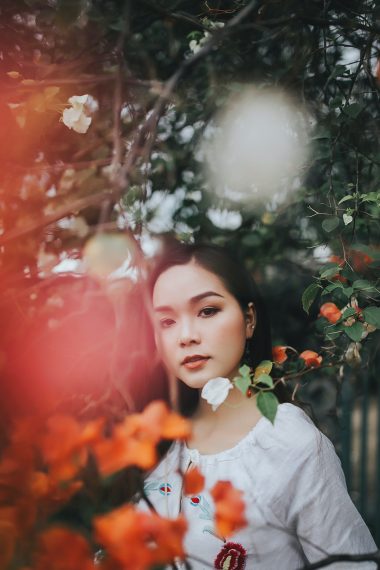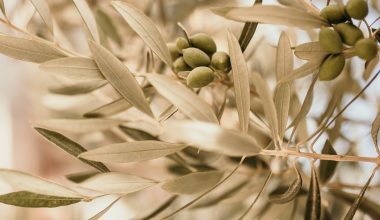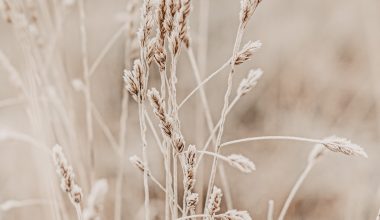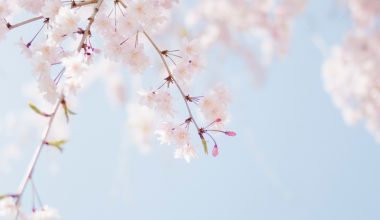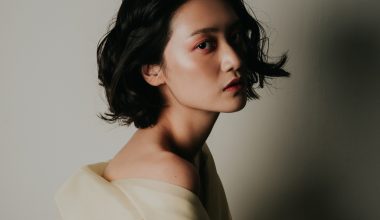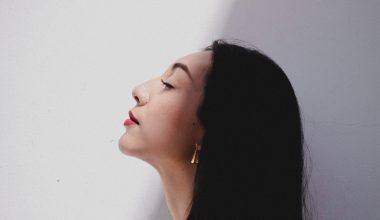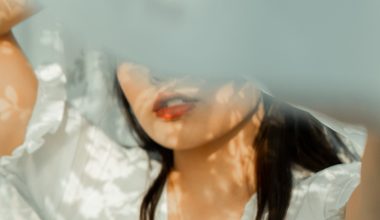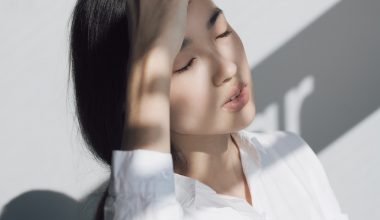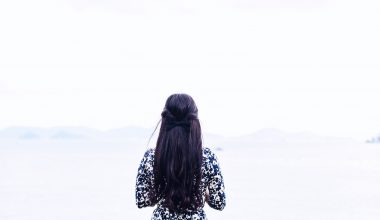When it comes to skincare, Japan is a world leader. The Japanese spend more per person on beauty products than any other country. Known for their radiant skin, they take a holistic approach to beauty, and the Japanese skincare routine is a huge part of this. Japanese skincare is very different to the Western approach, with an emphasis on spending the time to gently take care of your skin, in a daily act of self care.
Please note: This post contains affiliate links. For more information, see my disclosures here.
There are an overwhelming number of Japanese skincare products available, with many product types unique to Asian skincare. They often include natural ingredients, such as matcha, seaweed and rice bran; along with active ingredients like collagen, ceramide and the infamous pitera. This guide looks at all the steps in a Japanese skincare routine, explaining the purpose of each step, how to perform each one and some bestselling products too!
What is a Japanese skincare routine?
A Japanese skincare routine is focused on simplicity and is usually centred around just a few steps. However, there are many product types and possible skincare steps you can take, which can be a little overwhelming. The following guide covers all the possible steps in a Japanese skincare routine, though most people will only follow a few of these on a daily basis.
What are the basic steps in a Japanese skincare routine?
Skincare routines are different for everybody and really depend on the needs of your skin. That said, the five most common steps in a basic Japanese skincare routine are usually an oil cleanser, water cleanser, lotion, moisturizer and sunscreen. The first two steps act as a double cleansing routine (explained below), the next two steps are focused on layering moisture and the last step is for preventative sun protection.
What is double cleansing?
Double cleansing is perhaps the most important part of a Japanese skincare routine and is recommended even if you don’t wear makeup. It involves using two different cleansers, an oil-based one followed by a water-based one. This ensures the skin is deeply cleansed and all impurities are removed, before moving onto the next steps. While this can add time to a skincare routine, many believe you should spend just as much time cleansing your face as you spend applying makeup.
Layering moisture
Another key philosophy in Japanese skincare is applying moisture in light layers. The first step involves applying a lotion to prepare and soften the skin. This is followed by applying mositurizers in order of consistency, starting with the most watery, through to the thickest. This ensures the skin can absorb all of this goodness!
This article is part of our series on Japanese Skincare Routines:
– Japanese Skincare Routines: The Ultimate Guide
– Japanese 5-Step Skincare Routine
– Japanese 10-Step Skincare Routine
Japanese Skincare Routine
While the following list is extensive, most people follow just a few of these steps on a daily basis. This list covers all the possible steps in a Japanese skincare routine:
| Step | Description | Purpose |
| 1 | Oil Cleanser | To remove makeup, sunscreen and sebum |
| 2 | Water Cleanser | To remove dirt and impurities |
| 3 | Exfoliator | To clear pores and remove dead skin cells |
| 4 | Lotion | To soften and prepare skin for following steps |
| 5 | Essence | To provide further hydration with additional benefits |
| 6 | Serum | To target problem areas with higher concentration |
| 7 | Sheet Mask | To provide nutrients and moisture |
| 8 | Eye Cream | To help reduce dark circles, wrinkles and puffiness |
| 9 | Moisturizer | To seal in moisture and active ingredients |
| 10 | Sun Care | To protect from UVA and UVB |
It’s also worth noting that there can be differences between morning and evening skincare routines. A day routine should feel lighter and be focused on brightening, moisturizing and protecting. It might not include oil cleanser, but will include the use of sunscreen. The night routine should help nourish and repair the skin, and might include heavier moisturization.
Step 1: Oil Cleanser
This is the first step in a double cleansing routine, which is central element of Japanese skincare. An oil-based cleanser is used to remove oil-based impurities, such as makeup, sebum, sunscreen and pollution. Oil helps dissolve everything gently (including waterproof mascara and eyeliner) while still keeping skin hydrated. The most common product choice is a cleansing oil. These were first developed in the sixties by Shu Uemura and have been common practice in Japanese skincare ever since.
How To Use Oil Cleansers
Some people do this step both morning and night, while others only do a double cleanse in the evening. Apply cleansing oil with dry hands on a dry face and gently massage into your skin. Add a little lukewarm water to emulsify the product and then rinse it off with water.
Top Japanese Oil Cleansers
- DHC Deep Cleansing Oil
- Fancl Mild Cleansing Oil
- Kose Softymo Speedy Cleansing Oil
- Hada Labo Gokujyun Cleansing Oil
- Shu Uemura Ultime8 Cleansing Oil
Step 2: Water Cleanser
This is the second step in a double cleansing routine. A water-based cleanser is used to dissolve water based impurities, such as dirt and sweat. It will cleanse deeply, dissolving anything else the oil-based cleanser left behind. These cleansers come in many forms; including foam, gel, powder and solid bar soap. The most common choice is a foaming face wash, as they are gentle, cause less friction and make the most incredible fluffy foam too!
How To Use Face Washes
To use a foaming face wash, apply water to your face and create a foaming lather with your hands or a foaming net. Apply the product to your face and neck and massage in a gentle circular motion. Rinse well with lukewarm water.
Top Japanese Face Washes
- Senka Perfect Whip
- Hada Labo Gokujun Hyaluronic Foam Face Wash
- Rosette Cleansing Paste Sea Mud Smooth
- Nameraka Honpo Cleansing Wash
- Suisai Beauty Clear Powder
Step 3: Exfoliator
Japanese skincare takes a gentle approach to exfoliation, which can help clear debris from clogged pores and remove dead skin cells. While Western exfoliators are more focused on harsher physical scrubs and acids, Japanese skincare is all about gentle exfoliators. The most common choice are peeling gels, which are designed to result in smoother, brighter skin. Apparently a bottle of this infamous product is sold every 4.5 seconds! Japanese exfoliators are sometimes categorized under pore or keratin care.
How To Use Exfoliators
Gentle exfoliation should only be used 1-2 times per week. Don’t do this daily as it can damage your skin. To use a peeling gel, apply the product to your face and leave it on for a few seconds. Massage your face in gentle circles and small beads of debris will form. Rinse off with water.
Top Japanese Exfoliators
- Cure Natural Aqua Gel
- Rosette Gommage Peeling Gel
- Meishoku Detclear Fruits Peeling Jelly
- Keana Nadeshiko Moisture Peeling Gel
- Keana Nadeshiko Baking Soda Scrub Wash
Step 4: Lotion
Lotions (also known as skin conditioners or toners) are used to hydrate and soften the skin, preparing it for the deeper moisturizing steps that follow. They are an essential step in Japanese routines and are a unique product in Asian skincare that don’t really have a Western equivalent. While they have a watery consistency and are applied right after cleansing like Western toners, Japanese lotions are not astringent but are softening instead. They sometimes contain ingredients like ceramides and hyaluronic acid, making them closer to essences (see below). Some products fall into both categories and many people use just one or the other.
How To Use Lotions
Lotions are applied immediately after cleansing or exfoliating. They are gently patted into the face, using hands or a cotton pad and are left to fully absorb into the skin.
Top Japanese Lotions
- Hadalabo Gokujun Hyaluronic Solution
- Kiku Masamune Japanese Sake Moisturizing Toner
- Naturie Pearl Barley Skin Conditioner
- Nameraka Honpo Moisture Skin Lotion
- Muji Light Toning Water
Step 5: Essence
It can sometimes be difficult to know the difference between Japanese lotions, essences and serums. They are all very similar and there is sometimes overlap, as some products fall into multiple categories. Essences sit between lotions and serums and are kind of a hybrid. Essences are lightweight (like lotions) but usually contain a more concentrated combination of ingredients (like serums). These help provide further hydration, give a clear complexion and provide anti-aging benefits. The first Japanese company to produce an essence was Shiseido in 1897 with this product, while this holy grail product now has a cult following around the world.
How To Use Essences
Apply just a few drops of product to the back of your hand, before gently patting over your face and neck. This ensures your hands also get the benefits of the product!
Top Japanese Essences
- SK II Facial Treatment Essence
- Shiseido Eudermine Revitalizing Essence
- Tatcha The Essence (note, this a Japanese-inspired American brand)
- Kiku Masamune Sake Serum (labelled a serum, but is applied all over like an essence)
- Missha The First Treatment Essence (Korean brand that’s a bestseller in Japan)
Step 6: Serum
Japanese serums are designed to target specific skin concerns such as wrinkles, acne, dark spots or dullness. When compared to essences, serums are usually more concentrated and a little thicker in consistency. Just to confuse things, they are also sometimes called ‘beauty essences’. Serums tend to be more expensive, though there are plenty of drugstore options too. They tend to contain ingredients such as ceramides and collagen for plump skin and Vitamin C for dark spots and hyperpigmentation.
How To Use Serums
Focusing on the areas of skin concern (such as around the eyes and mouth) gently tap a small amount of serum into the skin.
Top Japanese Serums
- Melano CC Intensive Anti-Spot Essence
- Naturie Skin Conditioning Gel (also considered a moisturizer)
- Senka White Beauty Serum
- Pola Wrinkle Shot (also considered an eye cream)
- SK II Genoptics Spot Essence
Step 7: Sheet Mask
Sheet masks are an essential part of many Asian skincare routines and are used to provide nutrients and moisture to the skin. They can help to plump skin and achieve an overall glow, while also providing a relaxing meditative ritual.
How To Use Sheet Masks
Depending on your preferred frequency, apply a sheet mask once a week, fortnightly or monthly. In Korean skincare, it’s common to use sheet masks on a daily basis! To use, smooth the sheet mask onto your clean face and leave it to rest for about 10-15 minutes. Be careful not to let it dry out. Remove the mask and pat the excess product into your skin.
Top Japanese Face Masks
- Keana Nadeshiko Rice Mask
- Lululun Precious Face Mask Red
- Saborino Morning Mask Yellow
- Hada Labo Gokujyun 3D Perfect Mask
- Melano CC Intensive Care Masks
Step 8: Eye Cream
Eye creams are designed specifically for the delicate skin around the eye and are often grouped with serums. They are formulated with ingredients that help reduce the appearance of dark circles, wrinkles and puffiness. Just like serums, these can also tend to be a bit more expensive though there are some popular drugstore options too.
How To Use Eye Cream
Use your little finger to delicately tap the product around your eye area. Be very gentle with your application and never rub the product in, as this can damage your skin over time.
Top Japanese Eye Creams
- Meishoku Placenta Medicated Whitening Eye Cream
- Sana Nameraka Honpo Isoflavone Wrinkle Eye Cream
- Shiseido Elixir Superieur Enriched Wrinkle Cream
- Fancl Wrinkle Cream
- SK II R.N.A Power Eye Cream
Step 9: Moisturizers
Japanese moisturizers (and lighter products called emulsions) can be a confusing category as they come in so many forms; including lotions, milks, gels, oils, creams and night creams! This final moisturizing step is designed to seal in the moisture and active ingredients from all the layers that have previously been applied. These moisturizers really range in consistency; from light emulsion products that are suited to hot and humid summers, through to heavier face creams more suited to winter. Many products are all-in-one and combine the benefits of essences, serums and/or moisturizers.
How To Use Moisturizers
Gently pat moisturizer into your skin every morning and night.
Top Japanese Moisturizers
- Minon Amino Moist Charge Milk (emulsion)
- Kiku Masamune Sake Emulsion (emulsion)
- Naturie Skin Conditioning Gel
- Curel Intensive Moisture Cream (face cream)
- Hada Labo Gokujyun Perfect Gel (all-in-one)
Step 10: Sun Care
And finally, the last step is an essential one in a Japanese skincare routine; sun protection. Sunscreen is applied religiously at the end of a morning skincare routine, even when spending the day inside. Japanese sunscreens are far superior, and often have a light watery texture that doesn’t leave the skin feeling shiny or heavy. Sunscreen helps prevent premature aging and should always be applied as the final step, to provide the most protection.
How To Use Sunscreens
Gently pat into your face and neck as the top layer and final step in your morning routine. You’re all finished!
Top Japanese Sunscreens
- Nivea Sun Protect Super Water Gel
- Biore UV Aqua Rich Watery Essence
- Rohto Skin Aqua Super Moisture Gel
- Anessa Perfect UV Sunscreen Mild Milk
- Kanebo Allie Extra UV Gel Sunscreen
